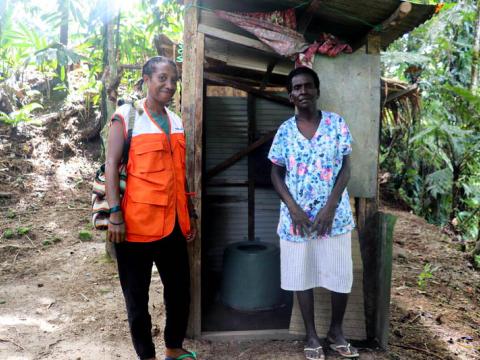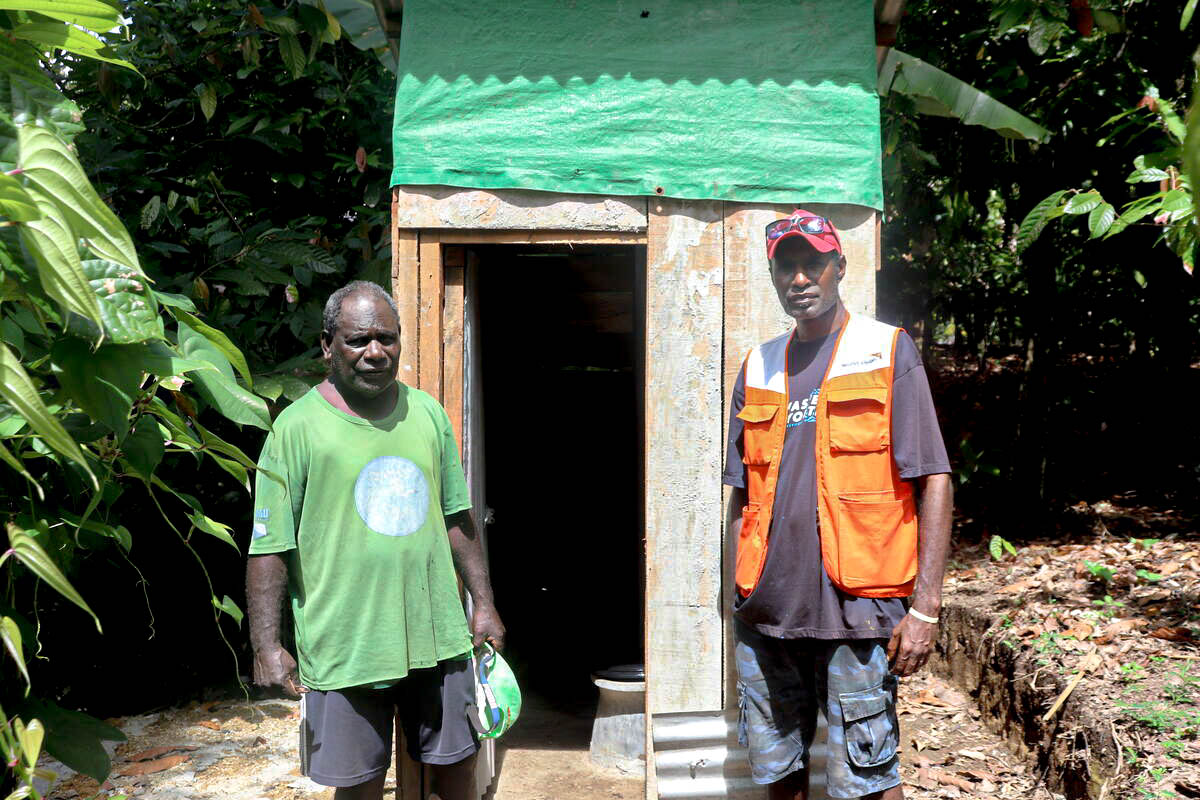Rebuilding Hope and Unity in Hanong

After the Bougainville crisis, the community of Hanong in the Siwai District of Arawa, Autonomous Region of Bougainville, faced numerous challenges. The wounds from the past had left a deep divide between the youth and the older generation. Trust was shattered, and a sense of hopelessness loomed over the village.
A transformative intervention took place when World Vision, with the funding support of the European Union (EU), conducted a Community Led Total Sanitation (CLTS) project aimed at building a sustainable way of life and to achieve an Open Defecation Free (ODF) status for the people of Hanong.
Initially intended to improve Water, Sanitation, and Hygiene (WASH) practices, our World Vision WASH team did not anticipate the major transformation that would follow.
Sam Hining, an elder and village chief, witnessed firsthand how the crisis had impacted the relationship between the community and the younger generation.
"This intervention has not only been a step forward to a sustainable way of life, but has fostered a good relationship between the youths and the community, which had been impossible to achieve after the Bougainville crisis," he said.
Through collective efforts, the youth and community members worked hand in hand. They built new latrines and water taps using materials they could find around them, they shared knowledge, and most importantly, they rebuilt trust.
The youth, who once felt marginalized, now stood at the forefront of change, helping to rebuild their community and achieve a brighter future.
Local health worker, Dinah Sipisong, reminisces about the times when the village flourished under the warm sun. The spirit of community was vibrant and strong, embodying unity and cooperation in its truest form.
"Back in the 70s and 80s, our village thrived with regular visits from health workers. However, the crisis instilled fear, causing a decline in health as young men and women became rebellious, greatly affecting our community.
"In terms of health, we would have 30 or more diarrhea cases annually as a result of poor hygiene practices at home. That was before World Vision came through our village and really advocated on the importance of hand washing and maintaining hygiene within the household," she added.
Dinah says World Vision’s intervention has given the people a new perspective on WASH. Basic practices
now keep them healthier, reducing the need for visits to the aid post where she works.
Youth leader and WASH Committee member, Graham Togosing, shared how the Community Led Total Sanitation (CLTS) training brought unity to their community.
"Many young people here move to urban areas in search of a better life, some venture into alluvial mining around the Panguna district, while others like myself remain in Hanong to maintain our crops and gardens. Life in Hanong has always been the same.
"However, everything changed when we participated in the CLTS training conducted by World Vision. It was then that we learned the importance of basic sanitation, especially regarding open defecation, which was something new to us. This training not only improved our hygiene practices but also united our community in a common goal."
“This inspired me and my fellow youths to help our community to build new latrines as instructed through the training. We began to feel a transformative change especially with the reception of our help by the community,” he says.
The story of Hanong is a testament to the resilience and determination of its people. With the support of World Vision and the EU, the CLTS project has not only improved WASH practices but has also healed deep wounds and brought a renewed sense of unity to the village.
As the youth and elders work hand in hand, they are not just building latrines and water taps, they are building trust, hope, and a brighter future for generations to come. This intervention has empowered the community, demonstrating that even in the aftermath of a crisis, collective effort and unwavering support can lead to transformative change.
The journey of Hanong serves as an inspiring example of how communities can overcome adversity and thrive, reminding us all of the profound impact that dedication and collaboration can have on creating a sustainable and harmonious future.
In recognition of the support provided, we would like to acknowledge the financial assistance of the European Union. The contents of this CLTS program are the sole responsibility of the people of Hanong and can under no circumstances be regarded as reflecting the position of the European Union.
Moreover, the impact of the CLTS project extends beyond the immediate benefits of improved sanitation and hygiene practices. It has sparked a cultural shift within the community, where cleanliness and health are now seen as integral to their way of life.
This newfound perspective has encouraged more households to adopt better hygiene practices, leading to a significant reduction in waterborne diseases and overall health improvement.
The project has also provided an opportunity for skill development and capacity building. Community members have acquired valuable knowledge and skills related to sanitation and hygiene, which they can now pass on to future generations.
This knowledge transfer ensures that the positive impact of the project will be sustained over time, fostering a culture of health and hygiene that will benefit the community for years to come.
As a result of the project, the community of Hanong has become a model for other villages in the region.
Neighboring communities have been inspired by the success of the CLTS project and are now seeking to implement similar initiatives in their own villages.
This ripple effect demonstrates the far-reaching impact of the project and highlights the importance of community-led development initiatives.
The story of Hanong is a powerful reminder of the potential for positive change when communities come together with a shared vision and the support of dedicated partners. The collaboration between World Vision, the European Union, and the people of Hanong has not only transformed the physical landscape of the village but has also rekindled a sense of hope and unity that will continue to guide them in the future.
